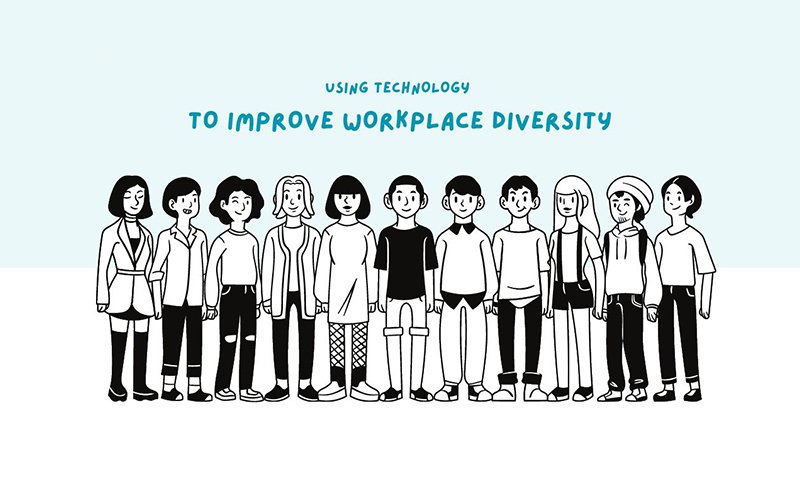
Advancing Diversity and Inclusion: The Role of Advanced HR Tools
Posted on July 4, 2024
In today’s fast-paced, interconnected world, organizations are recognizing the importance of diversity and inclusion (D&I) not just as a moral imperative but as a strategic advantage. A diverse workforce brings varied perspectives, fosters innovation, and enhances decision-making. However, achieving and maintaining a diverse and inclusive workplace can be challenging. This is where advanced Human Resources (HR) tools come into play, helping organizations to advance their D&I initiatives effectively.
Understanding Diversity and Inclusion
Diversity refers to the presence of differences within a given setting, encompassing a range of human attributes, including race, gender, age, sexual orientation, disability, and cultural background. Inclusion, on the other hand, is the practice of creating environments in which any individual or group can be and feel welcomed, respected, supported, and valued. Together, these concepts foster a work environment where all employees can thrive, ultimately leading to better business outcomes.
The Business Case for D&I
Research shows that organizations with diverse teams are more innovative and perform better financially. Companies with higher diversity in management have reported a 19% increase in revenue due to innovation. Additionally, diverse workplaces attract top talent and retain employees, reducing turnover costs. As such, investing in D&I initiatives is not just about compliance; it’s a strategic move that drives business success.
The Role of Advanced HR Tools in Promoting D&I
Advanced HR tools leverage technology to gather, analyze, and act on data related to diversity and inclusion. Here are several ways these tools can help organizations improve their D&I efforts:
1. Data Analytics for Informed Decision-Making
One of the significant advantages of advanced HR tools is their ability to collect and analyze large volumes of data. This data can provide insights into the demographics of the workforce, hiring patterns, promotion rates, and employee satisfaction levels across different groups. By using predictive analytics, organizations can identify potential barriers to D&I and develop targeted strategies to address them.
For instance, if data reveals that a particular demographic group is underrepresented in leadership roles, HR can implement mentorship programs, tailored training, and development opportunities specifically for those employees.
2. Bias Mitigation in Recruitment
Recruitment is often the first step in creating a diverse workforce. Advanced HR tools, such as Applicant Tracking Systems (ATS) with AI capabilities, can help eliminate unconscious bias in hiring processes. These systems can anonymize resumes, focus on skills and experiences rather than demographic information, and utilize structured interview guides that promote consistency.
Furthermore, tools that provide real-time feedback on job descriptions can help organizations craft more inclusive postings that attract a broader range of applicants. For example, AI-driven tools can analyze language for bias or exclusivity, suggesting more inclusive alternatives.
3. Enhancing Employee Engagement and Feedback
Creating an inclusive workplace requires ongoing feedback and engagement from employees. Advanced HR tools can facilitate this through regular surveys and engagement platforms. These tools can measure employees’ perceptions of diversity and inclusion within the organization, identify areas for improvement, and track progress over time.
For instance, pulse surveys can gather real-time feedback on how employees feel about D&I initiatives, allowing organizations to make adjustments as needed. Additionally, HR tools that enable anonymous feedback can encourage employees to voice their concerns without fear of repercussions.
4. Training and Development Programs
Advanced HR platforms can also support the development of training programs focused on diversity and inclusion. These programs can be tailored to address specific needs identified through data analysis. E-learning modules, workshops, and seminars can be tracked and measured for effectiveness.
By utilizing Learning Management Systems (LMS), organizations can ensure that all employees receive training on topics such as unconscious bias, cultural competency, and inclusive leadership. These tools can also track employee participation and understanding, helping to create a more inclusive culture over time.
5. Compliance and Reporting
With ever-changing regulations surrounding diversity and inclusion, advanced HR tools can help organizations remain compliant by providing necessary reporting features. These tools can automatically generate reports on workforce demographics, pay equity, and the effectiveness of D&I initiatives, helping organizations stay accountable.
Furthermore, these tools can assist in benchmarking against industry standards, allowing organizations to measure their D&I efforts against peers and identify best practices.
6. Creating Employee Resource Groups (ERGs)
Advanced HR platforms can facilitate the creation and management of Employee Resource Groups (ERGs), which are essential for fostering inclusion. These platforms can help organizations identify potential leaders within these groups, track participation, and measure the impact of ERGs on overall employee satisfaction and retention.
ERGs provide employees with a sense of belonging and community, allowing them to connect with colleagues who share similar backgrounds or experiences. This can be especially beneficial for underrepresented groups, fostering a culture of support and understanding.
Conclusion
Advancing diversity and inclusion in the workplace is not just a trend; it’s a vital component of organizational success. Advanced HR tools play a crucial role in this journey, offering insights, fostering engagement, and enabling data-driven decision-making. By leveraging these tools, organizations can create a more diverse and inclusive workplace, ultimately leading to enhanced innovation, better employee satisfaction, and improved business performance.
As companies continue to prioritize D&I, embracing advanced HR technology will be essential in making meaningful progress and fostering a culture where everyone can thrive.
Categories: Talent Acquisition
